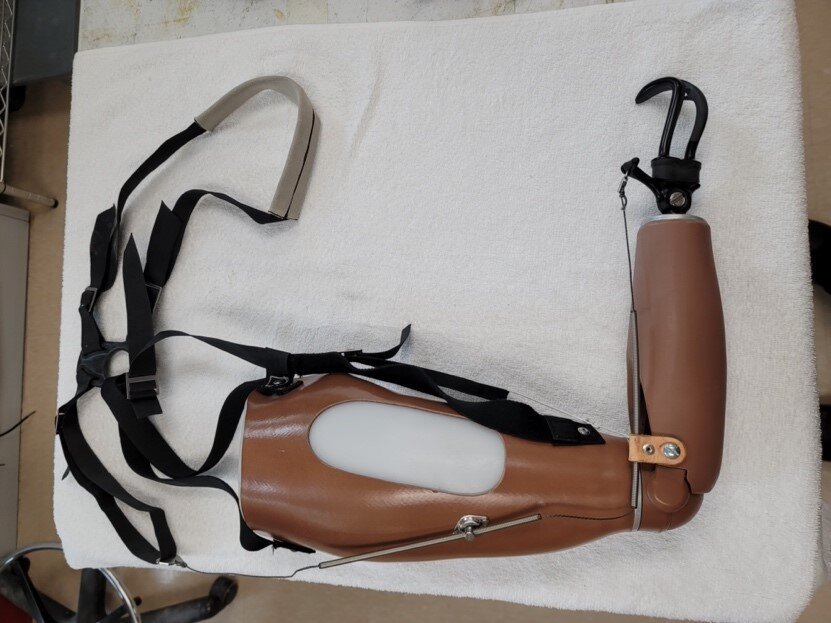Body-Powered Prostheses
Trans-humeral body-powered socket prosthetic arm with a hook for the terminal device. (Photo Courtesy of HJF)
Chief Warrant Officer 2 James Houdek lost his right hand and severely injured his left arm during a farming accident. He has returned to work full-time and continues to impress his doctors with his recovery.*
Chief Warrant Officer 2 James Houdek is shown working on a car with his body-powered prosthetic arm. Houdek lost his right hand and severely injured his left arm during a farming accident.*
*The appearance of U.S. Department of Defense (DoD) visual information does not imply or constitute DoD endorsement.
Body-powered prostheses usually rely on hooks and cables powered by other body parts, such as the chest, shoulder, and/or elbow, to control movements.¹ A body-powered prosthesis is the most widely used type of upper limb prosthesis.²
Pros:
- Very reliable, especially during periods of long use, because they do not rely on an electrical power source.2
- A shorter training period is required compared to other prosthetic options.1
- Simply designed, durable, and less expensive than electric prostheses.1,2
- Can be used by people with different levels of limb loss—above elbow (transhumeral) and below elbow (transradial), and by people with neurological impairments or neurodegenerative disorders.2
Cons:
- Designed to work well rather than look realistic (e.g., wires and cables show). Given this, body-powered prostheses may look more like a tool than a limb.2
- Described as hot or uncomfortable by some, and can sometimes cause tears and snags in clothing.1
- Require some physical ability to operate properly, so may not be a good choice for people with bilateral hand or upper limb loss, or limited strength and flexibility.2
Click Below for More Videos
Videos of Hand/Arm Transplant Recipients and People with Limb Loss
References
Sources
Kubiak CA, Etra JW, Brandacher G, et al. Prosthetic Rehabilitation and Vascularized Composite Allotransplantation Following Upper Limb Loss. Plast Reconstr Surg. 2019;143(6):1688-1701.
Upper Limb Prosthetics. Hanger Clinic. Accessed September 20, 2022. https://hangerclinic.com/prosthetics/upper-limb/








